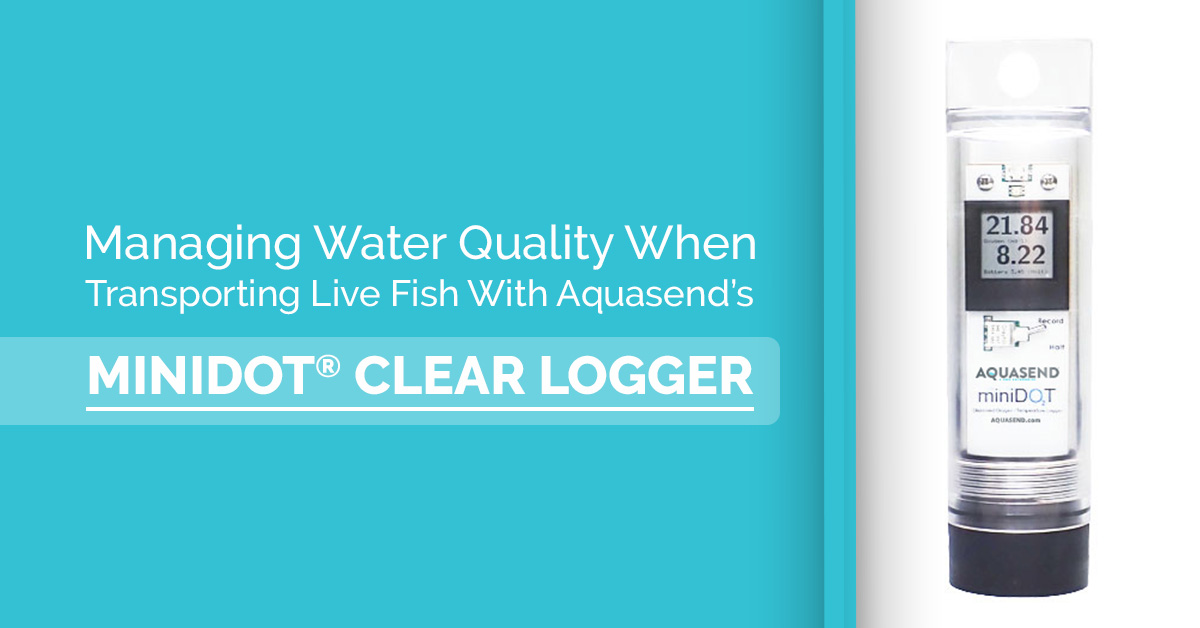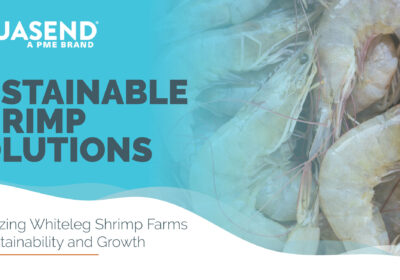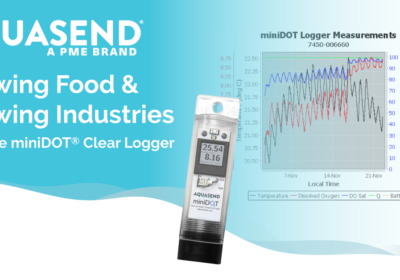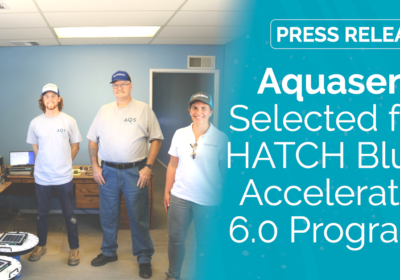Managing Water Quality When Transporting Live Fish Using Aquasend’s miniDOT Clear Logger

Managing Water Quality When Transporting Live Fish Using Aquasend’s miniDOT Clear Logger
No matter the fish species being transported, from largemouth bass to tilapia or even sturgeon, it is crucial to maintain proper oxygen levels and temperature when traveling with live fish. Each fish species has unique habitat requirements most often revolving around dissolved oxygen levels and temperature. There are many ways to transport fish according to AQUI-S, including in tanks by air, tanker trucks by road or well boats by river or sea. No matter your situation, it is vital to be familiar with different species’ oxygen levels and temperatures to ensure they are continuously maintained for the duration of your transport time to avoid catastrophic fish loss.
Dissolved Oxygen
According to an article by L. Swann of the Illinois-Indiana Sea Grant Program at Purdue University Published by Missouri Extension, “the most important single factor in transporting fish is the provision of adequate concentrations of dissolved oxygen (DO).” Missouri Extension recommends at least a 75 percent volume of oxygen in transportation bags to ensure oxygen is diffused appropriately in the fish’s confinement area. In fact, even after the initial delivery, inadequate dissolved oxygen levels during travel can result in fish kills for as long as 2 to 4 days after the transport is completed. To avoid this, it is vital that dissolved oxygen levels are always monitored during transport.
Temperature
- Swann also states temperature is a delicate factor during fish transport. “For cool and warm water species a temperature of 55 degrees to 60 degrees Fahrenheit is recommended. For species such as tilapia and red drum temperatures should be nearer to 60 degrees Fahrenheit. Cold water fish, such as trout, inhabit colder water and should be transported at even colder temperatures, such as 45 to 50 degrees Fahrenheit.” This article recommends slowly decreasing the temperature of the fish’s environment over a few days leading up to its transportation. Choosing to carry your fish in slightly lower temperatures can be beneficial if done correctly. Lower temperatures, when properly managed, can slow the speed of dissolved oxygen consumption, making fish maintenance during travel easier, without endangering fish health.
How the miniDOT® Clear Logger Optimizes Fish Transportation for Successful Delivery
Some fish species are much more delicate than others and have varying needs. To optimize data collection, no matter what species you need to transport, the miniDOT® Clear Logger offers customizable time and sample intervals via a USB cable, and software included with the purchase of a miniDOT® Clear. Additionally, the miniDOT® Clear Logger doesn’t need to be recalibrated regularly while in use. The miniDOT® Clear Logger is a completely submersible instrument that logs dissolved oxygen and temperature measurements. It has an internal LCD screen, which displays real-time measurements to the user. The oxygen sensor is an optode that measures dissolved oxygen concentration in water through a fluorescence method. These features allow you to view vital water quality data just by looking at the device, to save valuable time if dissolved oxygen or the temperature dip below uninhabitable levels.
This makes the miniDOT® Clear Logger an essential instrument in aquaculture transport as it constantly monitors water quality. Not only does the miniDOT® Clear Logger allow for quick access to water quality data, but it also records all data throughout the entire transport which can be retrieved to show the customer that conditions were optimal throughout the transportation process. For more information on the miniDOT® Clear Logger, visit our website or contact us.


